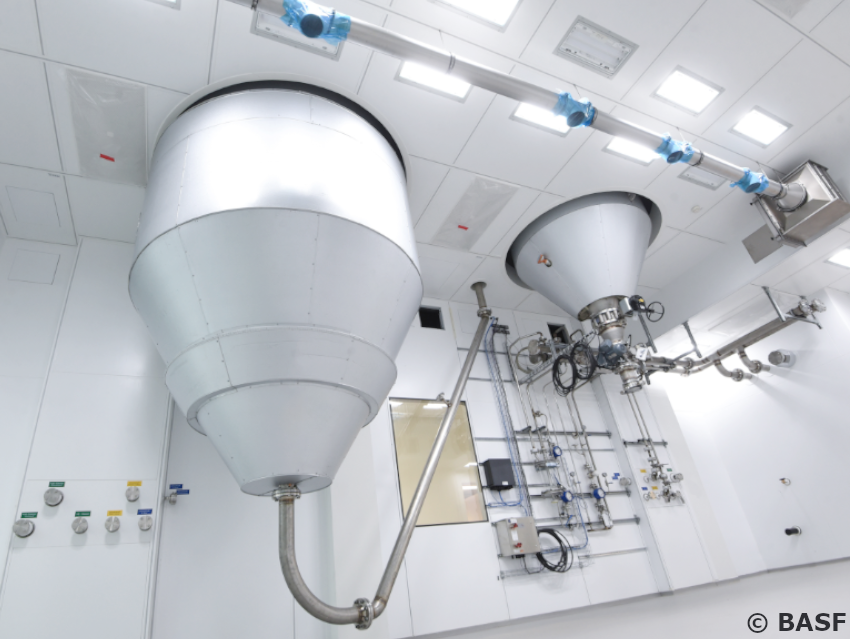Today, BASF officially opened its new Catalyst Development and Solids Processing Center in Ludwigshafen, Germany, inviting colleagues and members of the press to visit the new building. The new research facility, with its cutting-edge process equipment, will serve as a hub where the company conducts more focused and rapid development, testing, and optimization of innovative catalyst and process technologies on a pilot plant scale. The Center will also be of central importance for the development of new solids processing technologies. BASF develops catalyst and process technologies for its customers worldwide, it also uses a minor part of them in its own manufacturing plants.
 BASF constructed the new Center within three years to replace an older building. The new building has state-of-the-art safety features, such as separate black and white zones with locks that remain sealed off from one another to prevent the spread of heavy metal dust, and it is equipped with numerous new technologies for R&D activities. In total, the company invested a high double-digit million-euro figure in the new Catalyst Development and Solids Processing Center. The approximately 200 mid-scale pieces of equipment will be managed by 25 permanent staff members, with additional personnel from other departments joining as needed for specific research projects.
BASF constructed the new Center within three years to replace an older building. The new building has state-of-the-art safety features, such as separate black and white zones with locks that remain sealed off from one another to prevent the spread of heavy metal dust, and it is equipped with numerous new technologies for R&D activities. In total, the company invested a high double-digit million-euro figure in the new Catalyst Development and Solids Processing Center. The approximately 200 mid-scale pieces of equipment will be managed by 25 permanent staff members, with additional personnel from other departments joining as needed for specific research projects.
More than 80% of all chemical products come into contact with a catalyst at least once during their production. In industry, heterogeneous catalysts typically appear as metal-based solid materials, often in the form of pellets, powders, or granular substances. The solid catalyst provides a surface for reactants to adsorb, react, and then desorb as products. Modern equipment from the old building is being moved to the new facility, including several unit operations, such as equipment for producing new 3D-printed catalysts. 3D printing allows for the creation of porous materials to increase surface area. This technology is also scalable, enabling both development of prototypes for new catalysts and large-scale production.
The picture above shows equipment for drying solid materials. In spray drying, used to produce fine powders, the starting material is sprayed via a nozzle or atomizer into a hot gas stream. The particles are dried in the hot gas (e.g., air or nitrogen) in a very short time, either by being sprayed from top to bottom or from bottom upwards to allow more time for drying.
- BASF SE, Ludwigshafen, Germany




